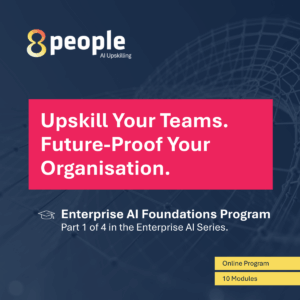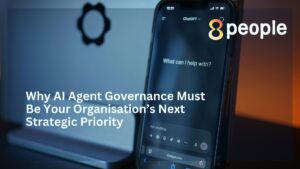Building a successful enterprise AI solution requires careful consideration of various factors, from strategic alignment to technical implementation and organisational readiness.
This checklist provides a comprehensive overview of the key topics and considerations to guide you through the process.
1. Strategy and Business Alignment
- Define Clear Business Objectives – Articulate the specific business problem you are trying to solve and the desired outcomes. Ensure the AI solution is aligned with the overall business strategy.
- Identify High-Impact Use Cases – Prioritise use cases that will deliver significant return on investment [ROI] and align with strategic goals.
- Establish Key Performance Indicators [KPIs] – Define measurable KPIs to track the success and impact of the AI solution.
- Secure Executive Sponsorship – Gain buy-in and support from key stakeholders and executive leadership.
- Develop a Business Case – Create a comprehensive business case that outlines the costs, benefits and risks associated with the AI project.
2. Data Management and Quality
- Assess Data Readiness – Evaluate the quality, availability and accessibility of your data. Ensure you have enough relevant data to train and validate your AI models.
- Implement Data Governance – Establish clear data governance policies and procedures to ensure data quality, consistency and compliance.
- Ensure Data Security and Privacy -Implement robust security measures to protect sensitive data and ensure compliance with data privacy regulations [e.g., GDPR].
- Build Transparency Into Data – Track the origin and movement of data to ensure transparency and auditability.
- Enhance Training Data with Augmentation and Synthetic Samples [if necessary] – Explore techniques to supplement your dataset if you have limited data.
3. Infrastructure and Architecture
- Choose a Flexible and Scalable Platform – Select an infrastructure that can support the entire AI lifecycle, from development to deployment and monitoring.
- Evaluate Cloud vs. On-Premises Deployment – Determine the best deployment model based on your organisation’s security, scalability and cost requirements.
- Leverage Modular Deployment and Orchestration – Use technologies that will ensure scalability and efficient resource management.
- Implement a Robust Monitoring and Observability Framework – Continuously monitor the performance, accuracy and health of your AI models and infrastructure.
- Ensure High Availability and Disaster Recovery – Implement a plan to ensure the resilience and availability of your AI solution.
4. Security and Privacy
- Adopt a Security-First Approach – Integrate security into every phase of the AI lifecycle, from data acquisition to model deployment.
- Implement Robust Access Controls – Use Role-Based Access Control [RBAC] and the principle of least privilege to restrict access to sensitive data and AI models.
- Encrypt Data at Rest and in Transit – Protect data from unauthorised access by encrypting it both when it is stored and when it is being transmitted.
- Manage Secrets Securely – Use a secrets management solution to store and manage API keys, passwords and other sensitive credentials.
- Conduct Regular Security Audits and Penetration Testing – Proactively identify and address security vulnerabilities in your AI solution.
5. Governance and Compliance
- Establish an AI Governance Framework – Define policies, procedures and roles to ensure the responsible and ethical use of AI.
- Ensure Regulatory Compliance – Stay up-to-date with relevant regulations and ensure your AI solution is compliant.
- Promote Transparency and Explainability – Make it possible to understand how your AI models make decisions, especially for high-stakes applications.
- Mitigate Bias and Promote Fairness – Actively work to identify and mitigate bias in your data and AI models to ensure fair and equitable outcomes.
- Establish a Clear Accountability Framework – Define who is responsible for the development, deployment and outcomes of your AI solution.
6. Model Development
- Select the Right AI/ML Models – Choose the most appropriate models for your specific use case and data.
- Establish a Scalable Machine Learning Operations Framework – Automate the entire machine learning lifecycle, from data preparation to model deployment and monitoring.
- Implement Version Control for Data and Models – Use version control to track changes and ensure reproducibility.
- Automate Model Testing and Validation – Implement a comprehensive testing and validation strategy to ensure the accuracy and reliability of your models.
- Continuously Monitor Model Performance – Monitor your models in production to detect and address performance degradation over time.
7. Organisational Readiness
- Assess and Develop AI Skills – Identify the skills needed to build and maintain your AI solution and invest in training and development.
- Foster a Data-Driven Culture – Promote a culture of data-driven decision-making throughout the organisation.
- Manage Change Effectively – Develop a change management plan to help employees adapt to new AI-powered processes and workflows.
- Encourage Collaboration between Business and Technical Teams – Foster close collaboration between business stakeholders and the AI development team.
- Establish an AI Center of Excellence [AICoE] – Consider creating an AICoE to centralise AI expertise and drive best practices across the organisation.
The Path Forward
At 8people, we help organisations move from AI ideas to execution, building the right foundations for scalable, ethical and high-impact AI solutions.
If you are ready to take the next step, we invite you to:
- Explore our Enterprise AI Foundations Program designed to upskill your employees to work in the AI-enabled environment.
- Subscribe to our newsletter for news and insights in AI or reach out to us if you need expert guidance on your AI initiatives.
We build AI that works with people, your business and your future!




